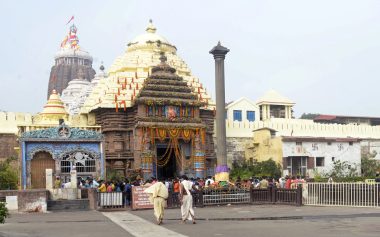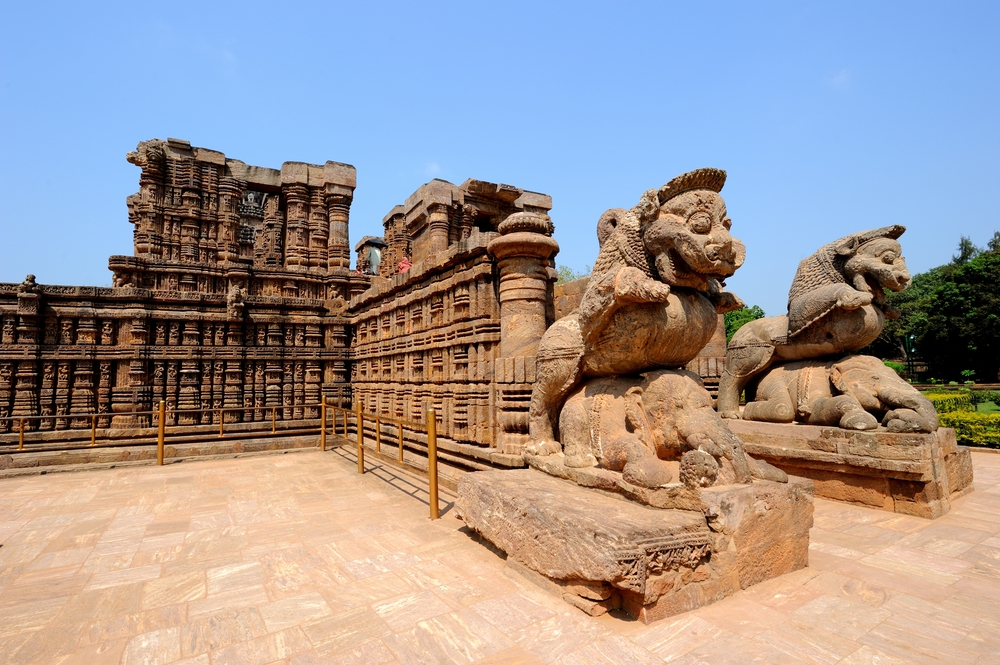In hardly any other country in the world do the opposites collide so intensively and almost always without a buffer. In India, it is accepted as normal that there are no transitions between life in the Stone Age and the advances of the computer. These extremes can also be found in Puri, where a fine-grained sandy beach, Swargadwar Beach, stretches all the way to Konarak on the Bay of Bengal, thirty kilometres away. Puri is a sacred place of Hinduism, because the Jagannath temple is dedicated to Vishnu, the “Lord of the Universe”. And for more than a millennium it has been an important and much-visited place of pilgrimage in a country where the voluntary suffering of the faithful is synonymous with the search for salvation from earthly torments.
The Great Procession in Honor of the God Vishnu

One thing in advance: The huge Jagannath Temple, blessed with more than a hundred sanctuaries, is reserved exclusively for Hindus. Holidaymakers have to be content with a view of the facades and usually go to a roof of the library of Raghunandan in the vicinity of the temple to take a look inside the complex. If you are lucky enough to visit the city on the Gulf in the months of June or July, you may then enjoy an unusual festival. At the traditional chariot festival, huge temple chariots are pulled through the streets of the city by up to four thousand strong men. The procession in honour of the god Vishnu begins at the Jagannath Temple, runs for about three kilometres and ends at the Gundica Temple. The coastal city in the eastern Indian state of Orissa is worth a visit not only because of the historic Rath Yatra festival. The cultural heritage of this seaside metropolis is revealed not only in temples, but also in the narrow streets of the old city.
A Food Offering from the Great Temple Kitchen
The pilgrimage site of Jagannath in Puri dates back to the 7th century and received its present form five hundred years later. The city was formerly part of the former kingdom of Kalinga. In addition to the four main halls, the impressive temple in Puri includes numerous shrines and a tower more than fifty meters high. In the huge temple kitchen, up to 25,000 pilgrims receive a warm meal every day. First and foremost, it is a lentil porridge with vegetables. The so-called food offering is cooked in earthen pots. The believers purchase this meal for a few rupees. The temple kitchen is considered one of the largest on the globe. In the vernacular, the temple complex of Puri is referred to as “The Pride of India”. It is one of the holiest sites in the country and is one of four pilgrimage sites that every Indian Hindu should have visited in his life. In the extensive area of the Hindu temple, up to 5,000 priests and employees are permanently employed. The preferred time to travel to the Bay of Bengal is from October to February.
A Second Shrine: “The Aunt’s House”
In addition to the great pilgrimage site of Jagannath, which became known in India as the “White Pagoda”, the Gundicha Temple is another sanctuary of the coastal city on the Gulf. It was nicknamed “The Aunt’s House” and is the place where, according to an Indian legend, the god Vishnu stayed with his siblings to relax for a week. The temple is surrounded by a well-kept and beautiful garden and is made of a yellow sandstone. The facility is enclosed by a wall. The Gundicha temple of Puri is associated with countless legends that have the life of Vishnu as their content. Its history is closely linked to the main temple Jagannath and is the destination of the annual chariot festival in honour of the deity. The Gundicha Temple will only be open at the time of the festival.
Before going to the temple, a ritual bath in the sea
Those who stay in Puri will look forward to a refreshing swim in the sea after visiting the holy sites. Here, visitors meet, among other things, devout Hindus who take a ritual bath on the Bay of Bengal before going to the Jagannath Temple. The long sandy beach of Puri develops a special charm in the early hours of the day, when the sun rises over the ocean on the horizon. If you want an almost untouched stretch of beach during your stay on the Bay of Bengal, you will find it in the town of Balighai, eight kilometres away. There the Nuanai River reaches the sea. A visit to the Turtle Research Institute there is interesting. With a little luck, visitors to the extensive casuarina forests on the banks of the river can spot the shy Baliharina deer. The artists’ village of Raghurajpur, located in the vicinity of Puri, is also worth seeing. Here, the company specialises in the production of the famous patachitras, the traditional Indian paintings on cloths.
Können wir Ihnen helfen?
Benötigen Sie Unterstützung bei Ihrer Reiseplanung oder weitergehende Informationen zu einzelnen Reisezielen? Wir freuen uns über Ihre Kontaktaufnahme.


